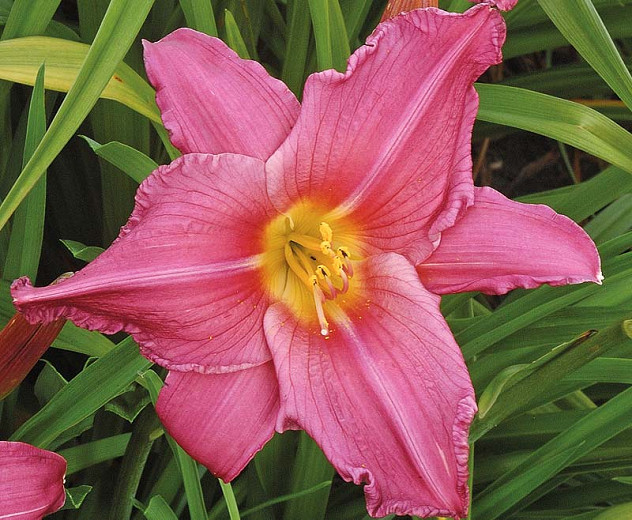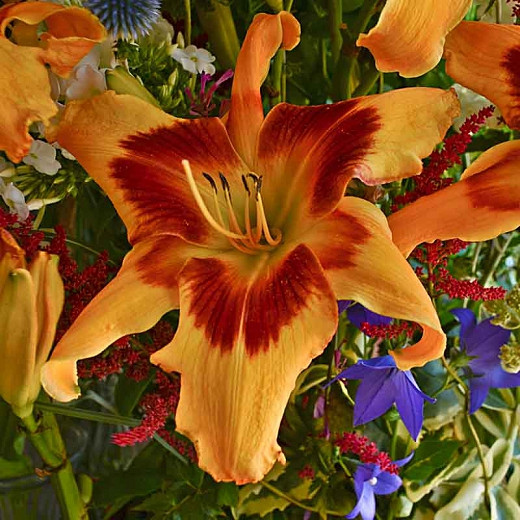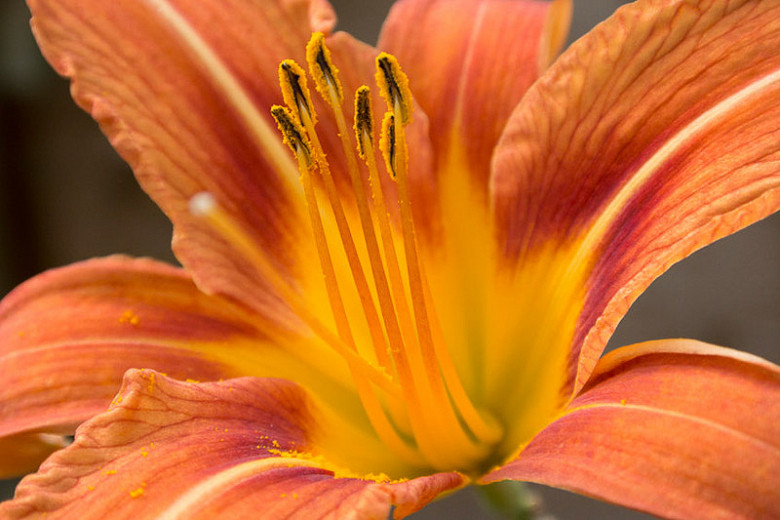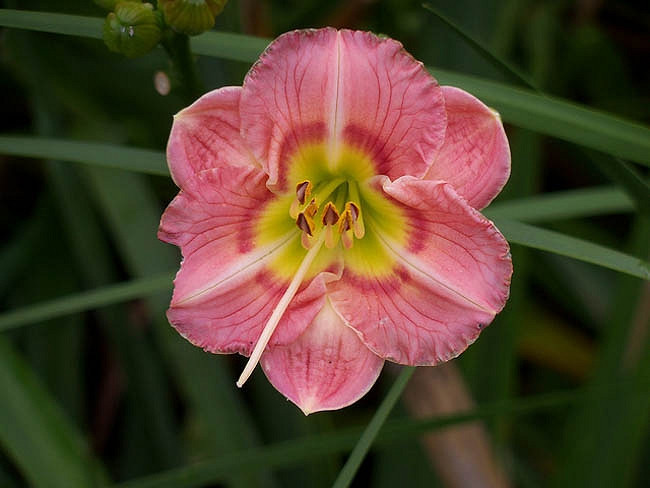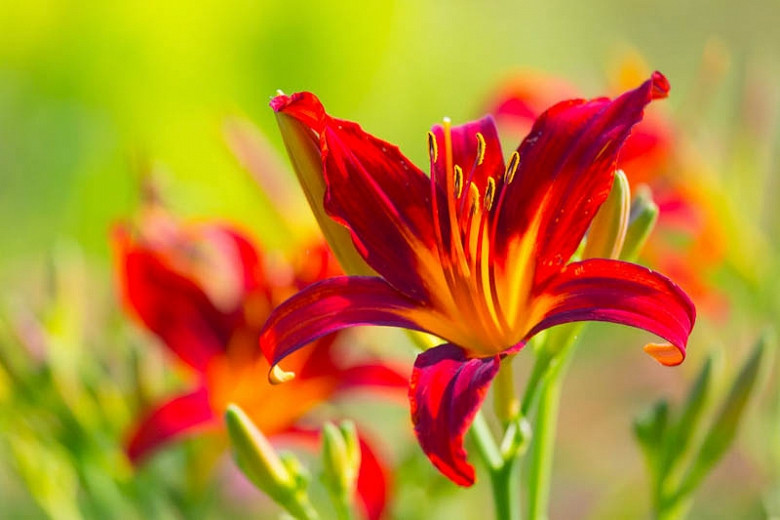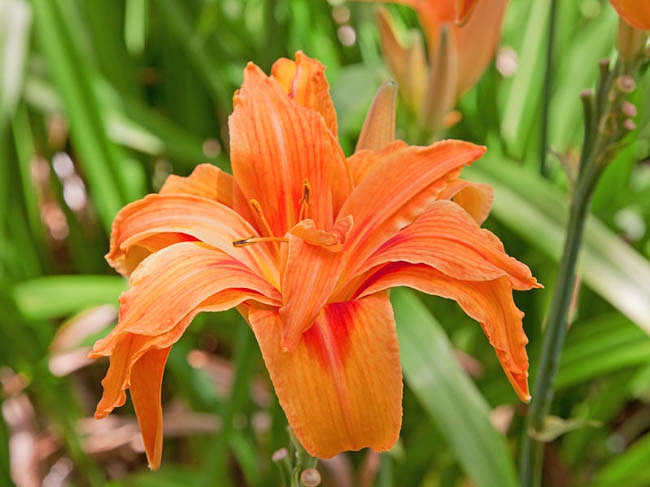Hemerocallis Daring Deception (Reblooming Daylily)
An eye-catching reblooming Daylily, award-winner Hemerocallis ‘Daring Deception’ produces profuse pale lavender-pink flowers with large, dark purple eye zones contrasting with their green throats, over an extremely long blooming period.
An eye-catching reblooming Daylily, award-winner Hemerocallis 'Daring Deception' produces profuse pale lavender-pink flowers with large, dark purple eye zones contrasting with their green throats, over an extremely long blooming period. Each flower, up to 5 in. wide (12 cm), typically lasts no more than 24 hours (thus the common name 'Daylily'), opening up in the morning and withering during the forthcoming night, possibly replaced by another one on the same scape (flower stalk) the next day. This early midseason tetraploid Daylily is semi-evergreen.
- Blooming in early-mid summer, this clump-forming perennial grows up to 24 in. tall (90 cm) and spreads via rhizomes to 18-24 in. (45-60 cm). Do not hesitate to mix this lovely Daylily with other varieties to prolong their color blossoms in the garden. Native to Eurasia, Hemerocallis includes over 60,000 registered cultivars, so you have plenty of choices!
- An ideal choice for shrub borders or perennial beds, as ground covers on slopes or in containers near the patio.
- Thrives in full sun to part sun in average, moist, but well-drained soils. While it performs well in a wide range of soils, fertile loam is preferred. Tolerates heat and summer humidity, but thorough watering is required to ensure its foliage remains attractive.
- Daylilies attract butterflies and hummingbirds but are toxic to cats. Rabbits tend to avoid daylilies.
- No serious pest or disease issues. Keep an eye out for mites, aphids, thrips, or daylily rust.
- The best time to plant Daylilies is in early fall or early spring.
- After flowering, remove spent blooms and seedpods to improve the appearance and encourage rebloom. When all the flowers on a scape are finished, cut off the scape close to ground level. Remove dead foliage from daylilies as they die back in the fall.
- Bred by Salter in 1994, it won multiple prestigious awards including the Honorable Mention award of the American Daylily Society in 2005.
Requirements
| Hardiness | 3 – 9 |
|---|---|
| Heat Zones | 2 – 11 |
| Climate Zones | 1, 2, 3, 4, 5, 6, 7, 8, 9, 10, 11, 12, 13, 14, 15, 16, 17, 18, 19, 20, 21, 22, 23, 24, H1, H2 |
| Plant Type | Perennials |
| Plant Family | Hemerocallis – Daylilies |
| Exposure | Full Sun, Partial Sun |
| Season of Interest | Summer (Early,Mid) |
| Height | 2' – 3' (60cm – 90cm) |
| Spread | 1' – 2' (30cm – 60cm) |
| Spacing | 18″ – 24″ (45cm – 60cm) |
| Water Needs | Average |
| Maintenance | Low |
| Soil Type | Chalk, Clay, Loam |
| Soil pH | Acid, Alkaline, Neutral |
| Soil Drainage | Moist but Well-Drained, Well-Drained |
| Characteristics | Plant of Merit, Showy, Semi-Evergreen |
| Tolerance | Drought, Rabbit |
| Attracts | Butterflies, Hummingbirds |
| Garden Uses | Beds and Borders, Edging, Ground Covers, Patio and Containers |
| Garden Styles | City and Courtyard, Informal and Cottage, Prairie and Meadow, Traditional Garden |


